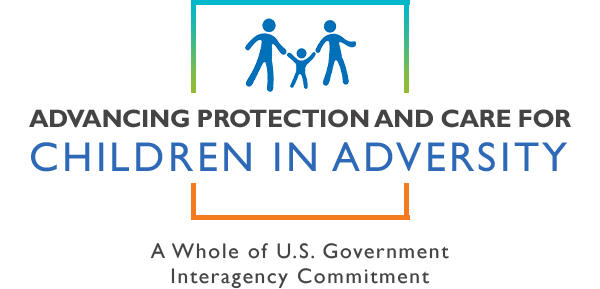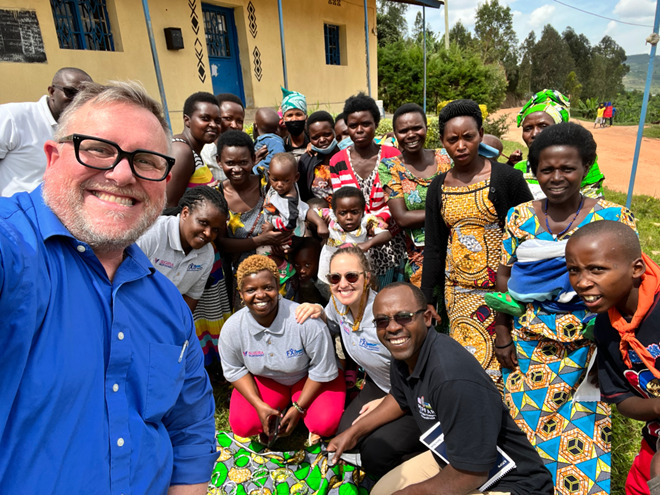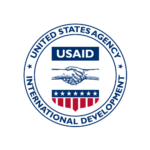INTERVIEW WITH MATTITO WATSON
FINDING SILVER THREADS OF HOPE IN A DAUNTING LANDSCAPE
FINDING SILVER THREADS OF HOPE IN A DAUNTING LANDSCAPE
Interviewed by Suzie Galler, APCCA newsletter editor
January 2023

Mattito Watson visits Sugira Muryango project in Rwanda
“One of the things my work in child protection has shown me is that no matter how horrible things are, no child is a lost cause. If you have the right inputs at the right time, most children can get past terrible things that have happened to them.”
Mattito Watson
Matthew Watson, fondly known as Mattito to his friends and colleagues, is the APCCA senior technical advisor who oversees our Strategic Objective #3: Protect Children from Violence, arguably one of the portfolio’s most challenging focus areas.
Mattito’s experience has taken him to some of the toughest conflict zones across the globe to face both victims and perpetrators of violence in an effort to de-escalate tensions and restore hope to those in need. He sees no child’s case as hopeless. Rather, he looks for the silver lining in each situation, and the tiny threads he can weave to build resilience in the most vulnerable.
SG: You’ve chosen to work with vulnerable children on some really tough issues. What was the impetus for taking on this kind of work?
MATTITO: I had this wanderlust and wanted to go see the world. My Peace Corps assignment was teaching math, science, and French in West Africa. The second I got to Africa, I loved it. I loved working with my students. I started to see that children and youth have such vulnerabilities, especially in Africa.
Until you travel to other cultures you don’t see the potential vulnerable children have to really change the future of their societies and their countries. There were so many dangers out there, especially for youth and older children. That fueled my passion.
So I went to Africa as a Peace Corps volunteer and then ended up basically staying 25 years.
SG: Did you work directly with the children themselves, or were you training other people to work with children?
MATTITO: I taught math and science for four years, and then I became a teacher trainer and trained other Peace Corps volunteers. Then after graduate school, I was working directly with former child combatants from Liberia, Sierra Leone, and Côte d’Ivoire. We were looking to integrate those children and youth back into their communities, which is challenging because they had actually caused many of the atrocities that members of the communities experienced.
SG: How does one address that? What did you feel when you met those children?
Sometimes we had to move those children because there was potential harm for them. It’s really tough when you have such young perpetrators, because yes, they did it, but children don’t have the autonomy to make decisions in conflict situations. Sometimes, as children witness or experience violence, they think that that is the way they get what they want. But that behavior can be unlearned, and you can find ways to work with those children.
The first thing to remember is to not separate them out from all the other kids. You want to have their lives as normal as possible. I built youth centers in the refugee camps and all youth came, but our workers were able to know who the former child combatants were and de-escalate when they saw an issue, working through nonviolent ways to address the conflict or problem.
These are children who have lost everything. We were able to provide them with a sense of belonging, a sense of appreciation, a sense of self. And one thing we did through that project was to say, “Yes, these terrible things happened to you,” but what we did is kind of flipped that over and said, “Yeah, but you guys are survivors.” And we started to give them roles of authority in these “small boy units”–that’s what they were called. So, we would put them as the coach or referee of the little league soccer tournament. We would use those skills that they had learned and turn it and make it positive.
We even had a little band in the refugee camp. One of the former trial combatants was a rapper. And they used to do these little shows in the camps at night. And one day, four young documentary filmmakers came to the camp looking for a story to film. And I said, “I’ve got a film for you. You should meet these guys. They have their little band and one of the ways they’re healing is through telling the story of the war – they’re trying to rebuild a future.”

The Refugee All Stars Band used music as a tool for healing Source: Cumbancha Website
So they ended up doing that documentary. They filmed it and they showed it at the Sundance Film Festival. It’s called Refugee All Stars. You can find it on iTunes. There are a couple of albums and this group ended up becoming kind of like an international sensation. They found a way to turn their painful experience into a real positive.
SG: That must have been very fulfilling.
“There’s a lot of darkness, but there are some tiny silver threads in there that we have to hold on to to be able to keep doing this kind of work. You’ve got to find the silver lining in there somewhere.”
MATTITO: It’s tough work. But it’s super fulfilling, because you’re aware that this child would’ve been lost. War is horrid and it brings terrible pain and suffering, but it also brings change and it brings opportunity.
SG: Obviously you’ve had a tremendous impact in these people’s lives.
MATTITO: One of the things that has shown me is that no matter how horrible things are, no child is completely lost. If you have the right inputs at the right time, most children can get past terrible things that have happened to them.
SG: How did you make the transition from the work you were doing in Africa to the work that you do for USAID?
MATTITO: After working for the Peace Corps, I worked for Save the Children for about 18 years in Africa. A position at USAID opened up, and I started thinking it would be interesting to see this work from a donor perspective. I put my hat in the ring, and they offered me the position.
I have been at USAID for almost five years now, and I really like it. I do miss working directly with the beneficiary populations. But it is also really fascinating and rewarding to have dialogues with very high-level government officials who are especially passionate about these issues. Sometimes they’re dealing with a very broken system or no budget whatsoever.

Mattito Watson with CDC’s Andres Villeveces and the former First Lady of Colombia at the launch of the VACS survey report
SG: What would you say are some of the biggest priorities for you right now in protecting children from violence?
MATTITO: I think data–we have been successful in doing Violence Against Children surveys in 22 countries, but there are still a lot of countries we need to engage in this work.
A billion children experience either physical, sexual, emotional, or psychological violence every year, so we have to keep pushing forward both on data and on understanding when, where, and how frequently this violence is happening. But we also need to have evidence that the interventions we’re proposing are effective in either preventing or mitigating that violence, or helping children and their families recover when that violence happens.
And we still don’t have the resources to do what we want to do, so we have to make tough choices. Part of the reason is that countries don’t fund this as a priority. That requires advocating with those countries to bring them evidence to show that this investment in children is going to save them billions of dollars in the future.
We tell them, “You’re going to have a much more productive society, because this violence that happens to children has lifelong consequences.” Part of our role as the U.S. government is to help support that, but the responsibility falls on the shoulders of those countries. So we have to advocate for governments to prioritize this as part of their annual budgets.
SG: Do you feel that you’re able to make a difference? Do they take action?
MATTITO: I do think the dialogue we’re having at the highest levels of government is effective. We’re using our funding to provide, for example, costing exercises—we work with governments to say, “If this is your plan, this is how much it’s going to cost to actually implement it for your country.” We help them build a budget, and if they’re not going to get that budget, then to help them to prioritize through our technical expertise. We provide what we can in terms of support to say, “You’ve done the Violence Against Children’s Survey, and now these are the possible interventions you can implement, and this is what it’s going to cost you to do it.” And what we need to say is: “This is what it’s going to cost you not to do it.”
SG: That’s key, isn’t it?
MATTITO: Yes, we’ve made huge strides here. The Violence Against Children Surveys are done within the countries themselves. We help support the cost of the enumerators and the travel and the technical support. When decision makers and stakeholders look at the data that their country itself has produced and it’s showing that one out of every three girls’ first sexual experience is under 16 years of age and it’s forced, how can you not react to that? Or that one out of every ten boys has been sexually assaulted? That in itself is a catalyst for change.
SG: What do you see as having the best possibility for long-term positive impact in the work that you’re doing?
MATTITO: I think a generation of children and youth that have a reduced exposure to violence or better support services when violence happens will lead to a much brighter future.
For me, the key is this: If you really want to have more money to build your economy, if you want to have a safer society, then we really have to address the issue of violence against children. Because we know from the adverse childhood experience studies that were done for years that this violence carries lifelong health consequences.
SG: What’s one program that you’re most proud of–one accomplishment that you would point to and say, “I know I made a difference here. This one really stands out in my life as a milestone”?
MATTITO: I think our work in Colombia has been exceptional. We’ve come together in partnership with UNICEF, End Violence Against Children, Together for Girls, the Government of Colombia, and a local university as a team to support the government in a true dialogue. And we’ve seen that being recognized and working all the way up to the Office of the (former) First Lady. So I think that model, which I helped to design and create, has been extremely successful–so much that we’re now working that same model in six other countries.
One of the other things that I’m quite proud of–and I have to give credit to Sarah Gesiriech, the former Special Advisor for Children in Adversity for this–is really moving into the digital space. That’s the future of where we’re going, and we have got to protect children.
A part of that was building our Digital Youth Council, which consists of 12 young people who have been able to tell us about their experiences and help guide us to understand what the dangers are. What is the perspective of youth? What do we need to be aware of?
SG: How do you address that?
MATTITO: This is what is powerful about the work that we do at USAID. We’re working alongside the Department of Justice and Interpol, and we’re trying to figure out, how do we build up these social welfare systems? How do we work across this wide range of players in tandem so that we can prosecute the predators and the criminals that are doing it so we can get children out of these situations and provide them services so that they can recover? And if they don’t have a family, then how can we get them into a family that can protect and love them?
SG: How does this work impact you personally? Do you have a sense of urgency that kind of keeps you from being able to let it go?
MATTITO: I know I can’t do everything, but I’m going to try to do as best I can with what I have. That’s part of my job: advocating, influencing, informing, within USAID and with others, so that they contribute their time, energy, and money to help support more. There’s a lot of like-minded people out there. They’re all doing some really good work, and that’s inspiring for me.
SG: What do you see as the path to end violence against children?
MATTITO: You know, it’s impossible for children to completely avoid violence these days. But having the ability for a parent or caregiver to be there to support their children makes a huge difference. Ultimately, protective, loving family care is probably the best tool we have.







